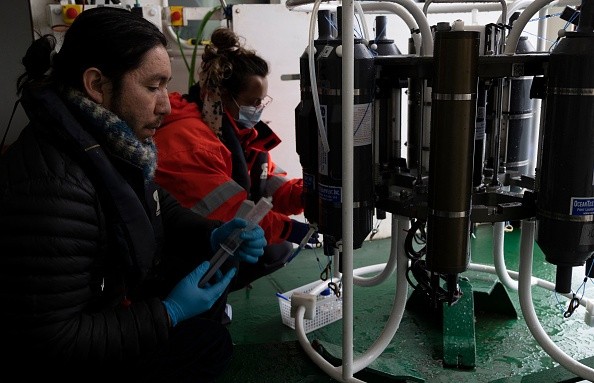A paper by Staffordshire University and the Rozalia project, published in the Marine Pollution Bulletin, investigated the procedural contamination of microparticles in aquatic environments.
The study found that significant amounts of microplastics and microfibers from the scientists' clothes and equipment mixed with the environmental pollution in water samples.
Study shows that the emission of microplastics

Professor in Forensic and Environmental Science at Staffordshire University, Claire Gwinnett, explained vi ScienceDaily: "In this field, this may arise because of the dynamic nature of the surroundings which include wind or weather, movements required to acquire samples and the near-proximity vital for scientists you bought and steady samples whether or not in a medium-sized vessel, small boat or sampling from shore."
"In a cell lab, this frequently takes place because of the use of small, multi-use areas and comparable necessities for scientists to be near the samples at the same time as processing," Gwinnett added.
The data was amassed all through a day trip alongside the Hudson River from Rozalia Project's 60' oceanographic cruising studies vessel, American Promise.
The crew tracked the contamination through gathering fibers from each viable supply of infection at the vessel, which include apparel worn through each technology and boat team, sail baggage and tarps, sail, and gadget manipulate traces in addition to indoor textiles, as per SciTechDaily.
The study also presented forensic science-inspired methods that can reduce the amount of procedural contamination erroneously added to environmental samples by 37% during the collection phase of a study.
This reduction can save research teams considerable time by reducing the number of microparticles to be analyzed.
Solutions for future studies embrace equipping the entire team within the same low-shed, remarkably colored garments ideally also with uncommon fiber morphology.
This may allow fast identification as contamination.
It is vital for the entire boat crew to be included in these quality control issues since fibers from the captain and officers were also found in samples throughout this study.
What are microplastics?
According to the National Geographic, microplastics, as the name suggests, are tiny plastic particles.
Officially defined as plastic less than 5 millimeters (0.2 inches) in diameter, it is smaller in diameter than standard pearls used in jewelry.
There are two categories of microplastics: primary and secondary.
Primary microplastics are microfibers from small particles used in commercial applications, such as cosmetics and other textiles such as clothing and fishing nets.
Recycled microplastics are particles formed from the breakdown of larger plastic items, such as water bottles.
This breakdown is caused by exposure to environmental factors, principally the sun's radiation and ocean waves.
Microplastics had been detected in marine organisms from plankton to whales, in industrial seafood, or even in consuming water.
Alarmingly, trendy water remedy centers cannot get rid of all strains of microplastics.
To similarly complicate matters, microplastics in the ocean can bind with different dangerous chemical substances earlier than being ingested with the aid of using marine organisms.
Scientists are still not sure if ingested microplastics are harmful to human or animal health, and if so, what specific risks they may pose.
However, many countries are taking steps to reduce the number of microplastics in the environment.
A 2017 UN resolution discussed microplastics and the need for regulation to reduce these risks to marine, wildlife, and human health.
© 2025 NatureWorldNews.com All rights reserved. Do not reproduce without permission.





